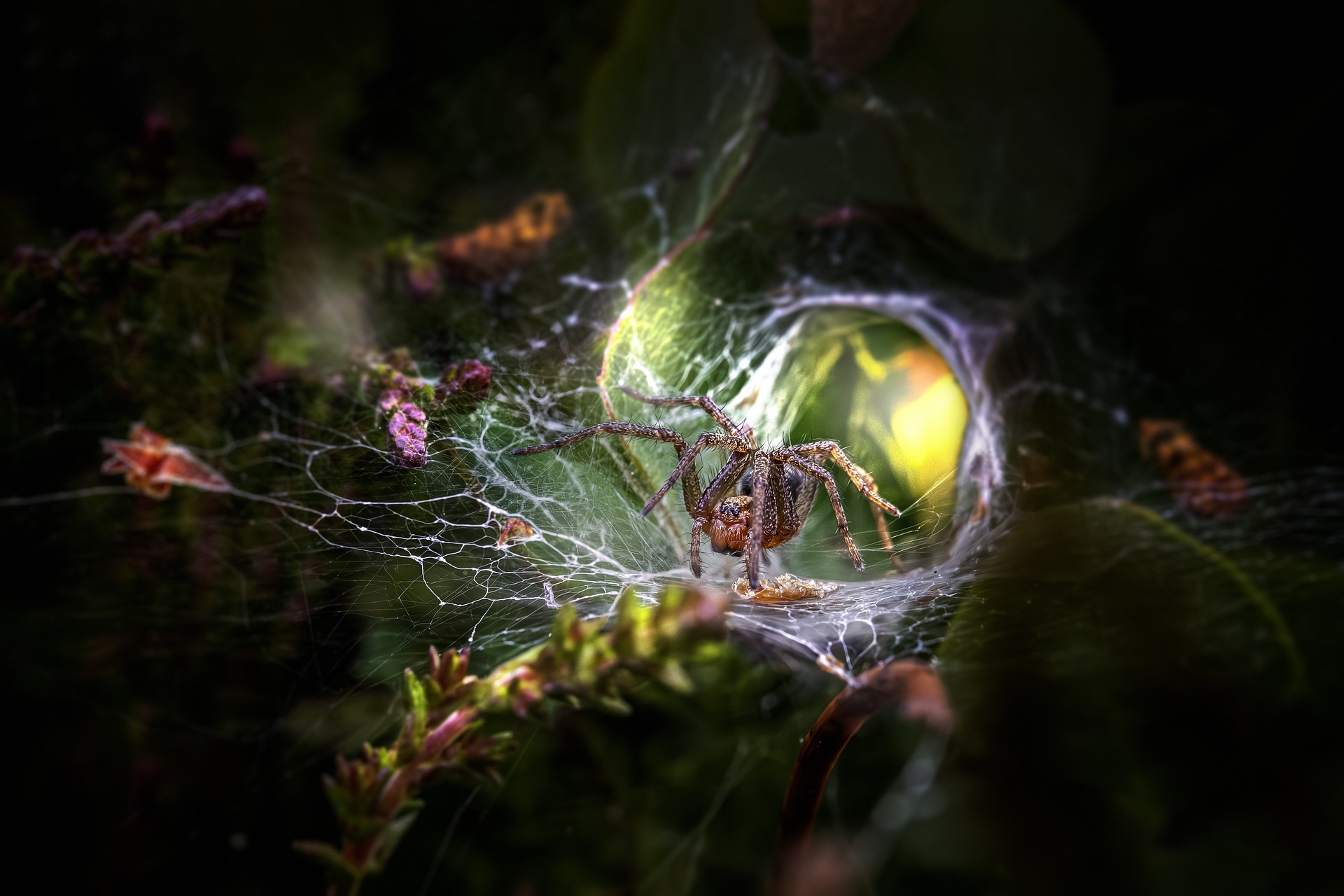The term Funnel Web Spider is commonly used to describe several different species of spiders that build funnel-shaped webs. However, it is most often associated with spiders in the family Hexathelidae, particularly the notorious Sydney Funnel-Web Spider (Atrax robustus). Here are some detailed features and characteristics of funnel web spiders:
Appearance
- Size: Funnel web spiders vary in size depending on the species. For instance, the Sydney Funnel-Web Spider can range from 1 to 5 centimeters in body length.
- Coloration: These spiders are generally dark in color, ranging from black to brown. Their bodies are often shiny and robust.
- Body Structure: They have a large, powerful chelicerae (fangs) that are adapted for delivering venom. Their bodies are divided into a cephalothorax and an abdomen, typical of spiders.
- Eyes: They possess eight eyes, arranged in two rows.
Habitat
- Preferred Habitats: Funnel web spiders typically inhabit moist, cool environments. They are commonly found in rainforests, woodlands, and suburban gardens. They build their distinctive funnel-shaped webs in sheltered locations such as burrows, under logs, rocks, and in leaf litter.
- Geographic Range: The Sydney Funnel-Web Spider is native to eastern Australia, particularly around the Sydney region. Other species of funnel web spiders can be found in various parts of Australia.
Behavior
- Web Structure: The web consists of a small, thick silk funnel that leads to a tubular retreat where the spider hides. Radiating from the entrance of the funnel are several lines of silk that act as tripwires, alerting the spider to the presence of prey.
- Hunting: Funnel web spiders are ambush predators. They remain hidden in their tubular retreat and wait for prey to trigger the tripwires before quickly emerging to capture it. Their diet mainly consists of insects, small vertebrates, and other arthropods.
- Defensive Behavior: These spiders can be highly aggressive when threatened. They display a distinctive defensive posture, raising their front legs and displaying their fangs.
Reproduction
- Mating: Males leave their burrows during the warmer months to search for females. The mating process involves the male tapping on the female’s web to signal his presence. If the female is receptive, mating occurs in her burrow.
- Eggs: Females lay eggs in a silk egg sac within their burrow. The eggs hatch into spiderlings, which stay with the mother for a short period before dispersing.
- Lifespan: Females can live up to 20 years, while males typically live for a shorter period, often dying soon after mating.
Venom
- Toxicity: The venom of some funnel web spiders, particularly the Sydney Funnel-Web Spider, is highly toxic to humans and can cause severe medical symptoms. The venom contains atracotoxins, which can affect the nervous system.
- Medical Significance: Bites from these spiders require immediate medical attention. An effective antivenom is available, and prompt treatment significantly reduces the risk of severe outcomes or fatalities.
Conservation Status
- Funnel web spiders are not generally considered endangered. However, their populations can be affected by habitat destruction and changes in the environment.
Interesting Facts
- Highly Venomous: The Sydney Funnel-Web Spider is often considered one of the most dangerous spiders in the world due to its potent venom and aggressive behavior.
- Antivenom Development: The development of an antivenom in the 1980s has greatly reduced the number of fatalities and serious cases resulting from funnel web spider bites.
Identifying Funnel Web Spiders
- Distinctive Features: Key identifiers include their dark coloration, robust body, large fangs, and the characteristic funnel-shaped web. Observing their defensive behavior and habitat can also help in identification.
- Behavioral Traits: Their aggressive defensive posture and the presence of their distinctive webs are significant identifiers.
In summary, funnel web spiders, particularly the Sydney Funnel-Web Spider (Atrax robustus), are known for their distinctive funnel-shaped webs, aggressive behavior, and potent venom. Native to Australia, these spiders are fascinating yet potentially dangerous inhabitants of their ecosystems. Proper awareness and caution are essential when dealing with or encountering these spiders.
Views: 1295
Subscribe to the newsletter:
